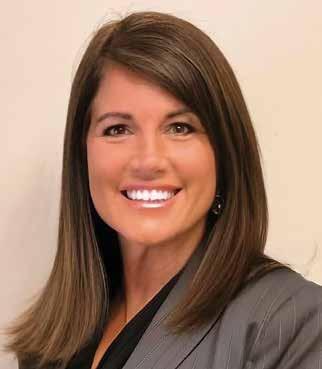Pell City Museum Art Displays • Eden New Hope Baptist • Quiltwright Town & Country Expansion • St. Clair Arena • Journey of a Lifetime
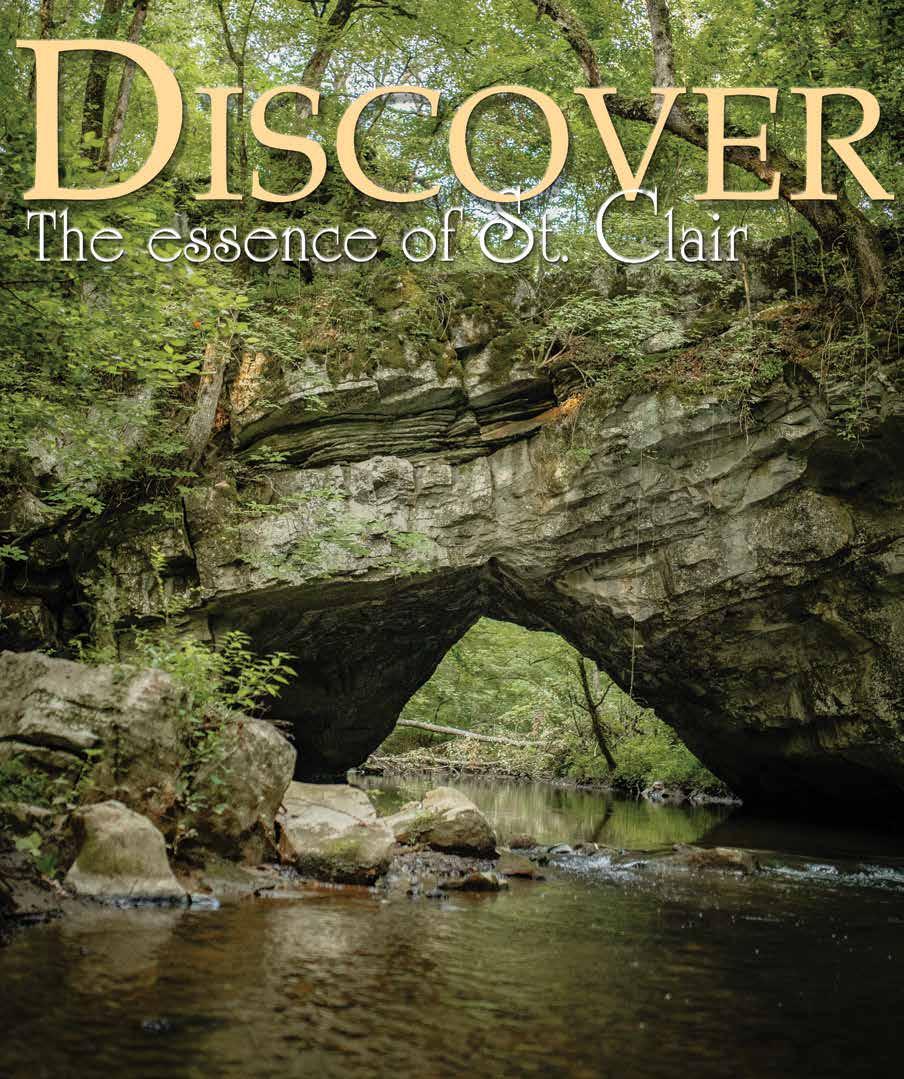
August & September 2025

Pell City Museum Art Displays • Eden New Hope Baptist • Quiltwright Town & Country Expansion • St. Clair Arena • Journey of a Lifetime

August & September 2025



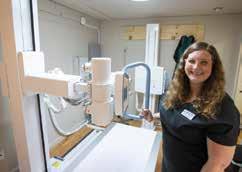















August & september 2025

CAMINO de SANTIAGO
Pell City resident makes the journey of a lifetime


St. Clair’s place of sacred beauty

Traveling the Backroads
Eden New Hope Baptist
The Rock Bridge
A key part of Chandler Mountain’s natural wonder
Page 28
The Quiltwright of Pell City
Making magic with fabric and needles
Page 34
Museum of Pell City Exploring the visual arts
Page 54
BEYOND THE ARENA St. Clair Agriculture and Multi-Event Center
St. Clair Medical Community HELMS HEALTHCARE
A bygone era of medicine
Page 58
ST. CLAIR EYE
Treating the whole patient Page 64
St. Clair Business
Town & Country Ford
Douglas Manufacturing
Page 68
Page 78
Final Focus
The lives we almost lived
Page 82





OUR SERVICES
• Lawn Care Maintenance
• Landscaping
• Hardscapes
• Landscape Lighting
• Custom built Pergolas
• Seawalls
• Retaining Walls
• Tree Removal services
• Stump Grinding
•
•
Mention








Carol Pappas is editor and publisher of Discover St. Clair Magazine. A retired newspaper executive, she served as editor and publisher of several newspapers and magazines. She won dozens of writing awards and was a Distinguished Alabama Community Journalist at Auburn. She serves as president/CEO of Partners by Design, which publishes Discover and LakeLife 24/7 Magazine®.

Graham Hadley is the managing editor and designer for Discover The Essence of St. Clair Magazine and also manages the magazine website. Along with Carol Pappas, he left The Daily Home as managing editor to become vice president of the Creative Division of Partners by Design multimedia company.

Roxann Edsall
Roxann Edsall is a freelance writer and former managing editor of Convene Magazine, a convention industry publication. She has a degree in (broadcast) journalism from the University of Southern Mississippi, worked as a television news reporter in Biloxi and as a reporter and assignments editor in Birmingham.

Elaine Hobson Miller is a freelance writer with a B.A. in journalism from Samford University. She was the first female to cover Birmingham City Hall for the Birmingham Post-Herald, where she worked as reporter, food editor and features writer. She is a former editor of Birmingham Home & Garden magazine and staff writer for Birmingham magazine.

Wally graduated from Auburn University where he graduated in 1976 with his BA in History and minors in German and Education. Wally’s skills in photography blossomed during college.After a 30-year career, he decided to dust off his camera skills and pursue photography full time.
Mackenzie Free
Mackenzie Free is an experienced and nationally published photographer with a bachelor of fine arts degree. She is a Birmingham native now cultivating life on a farm in Steele with her husband & 4 daughters.

Paul South, a native of Fairfield, is an Auburn graduate with a degree in journalism and a double minor in history. He also has a Juris Doctorate degree from the Birmingham School of Law. Although sports writing was always his first love, he had a versatile career as reporter, columnist and first full-time sports information director at Samford University.


Joe Whitten was born in Bryant on Sand Mountain. When he arrived in Odenville in 1961 to teach at St. Clair County High School, he found a place to call home. Joe was active in the Alabama Writers’ Conclave and the Alabama State Poetry Society. The society named him Poet of the Year in 2000. Joe has also published several local history books.

As we embark on our 15th year as a magazine, I still have the same trouble I did at the launch – choosing just which stories to bring to life each issue. There are so many, it really is hard to choose.
In stark contrast to my days in the newspaper business, where news was news – good and bad – Discover St. Clair offers us an opportunity to report ‘the happy news.’ And there’s plenty of it, which brings me back to the original point – it’s hard to choose.

Take this month, for example. It’s a mosaic of happy stories – from natural wonders atop Chandler Mountain to a Pell Citian’s self-discovery along a road in Spain to the celebration of 200 years for a house of worship in Eden.
St. Clair County Arena and Event Center continues to make an impact on the quality of life – providing the perfect venue for everything from rodeos and dog shows to pickleball tournaments and celebrations of all kinds.
In the business community, we see an explosion of good news as bright as last month’s fireworks displays across the county’s skies.
Pell City saw the lion’s share. Douglas Rulmeca Group cut the ribbon on Project Vulcan, a $11.7 million venture yielding 50 jobs. Town & Country Ford wielded an oversized pair of scissors, too, for the ceremonial ribbon cutting of its new multimillion dollar facility.
St. Clair Eyes, optometric care with 25 years of experience behind it, has opened in Pell City, and a former Pell City doctor, Rock Helms, is quickly reaching milestones with his new clinic, Helms Healthcare – surpassing 1,000 patients in the first 90 days.
Museum of Pell City is not content to rest on the laurels of being one of the best small town museums in the state. The museum is thriving with new exhibits and programs, keeping things fresh for visitors.
Now, the museum has added an art venue to showcase the

local art community. Like the museum’s organizers say, they like to think big. And because of it, their community’s quality of life offerings are reaping the benefits.
There are plenty of other examples of people seeing a need and filling it, but perhaps none so impactful as the education foundation created years ago in the St. Clair County School System. Established originally in 2003, it is being resurrected from a few years of dormancy due to COVID and other factors to offer a helping hand to teachers once again.
The Foundation’s dollars mean enhanced classrooms and educational experiences across the county.
As always, a common thread runs through all these tales of triumph. It truly is ‘happy news,’ and we are more than happy to report it.
Turn the page and discover it all with us!
Carol Pappas Editor and Publisher
Carol Pappas • Editor and Publisher
Graham Hadley • Managing Editor and Designer Dale Halpin • Advertising


Pell City resident makes the journey of a lifetime
Story by Paul South
Submitted Photos

For the pilgrims who annually flock to Spain from around the world to walk all or part of the Camino de Santiago, the reasons for their journey are as varied as they are.
For the hikers, it can be a trek of faith, fellowship, revelry, reflection, exploration or a communion with God and nature. Known as the Way of St. James, it might well be a tour mixing all of the above, ending at the Cathedral of Santiago de Compostela in northern Spain, where it is believed the remains of St. James the Great rest.
For Jean Barnett of Pell City, her 70mile, weeklong journey on a portion of the Camino Frances or French Way, was a moveable feast of all of the above. The spark for her journey was first ignited by her yoga instructor, Terri Sellers, a five-time veteran of the journey, who was organizing a Camino trip for a small group of friends.
“I heard her talking about walking across Spain, going on this pilgrimage, and I was intrigued. I’d heard of it many years ago, and I decided if I didn’t do it now, I might never do it,” Barnett said.
Multiple reasons fueled her desire to tackle the journey.
“The challenge drew me in,” she said. “But the opportunity to do it with friends who were like minded attracted me to it.”
It came at a time, too, when she had wrestled with family health challenges.
“(The Camino) was just something I felt like I wanted to experience – to get back out and spend some time exploring and doing something that sounded challenging but was doable,” she said.
And there was the spiritual side.
“People have a lot of reasons for doing it, and mine was somewhat religious,” she said. “But being out on the trail gives you a chance to really meditate and have an opportunity to just kind of be with yourself paired with many opportunities for fellowship along the way. But I took time to pray and listen to the sounds of nature, which was one of the things I really loved – the early morning walks, listening to the bird calls, just the sounds of the world waking up.”
She added, “To be out there in a place where you could just be by yourself and think.”
And there were times of fellowship with her group and with other travelers along the road.
“There’s a balance there,” she said. Barnett, a former runner who competed in half-marathons, moved at a more deliberate pace in her pilgrimage. Deep reflection, introspection and fellowship don’t move at a racer’s pace. Camino de Santiago is an opportunity to escape from the daily grind.
“It’s something of a distraction that takes you out of your role in day-today life and the chance to just kind of contemplate the world and your purpose,” Barnett said.
Amid the deeper moments, there are the earthlier concerns, from fatigue to blisters on the trail. “You just take every day as it comes and deal with it,” she said.
In 820, a tomb was discovered in Galicia believed to be the final resting place of St. James the Great. According to “The Camino de Santiago Survival Guide,” while the details are a bit fuzzy, the “Camino” was the beginning of Christian pilgrimages. It is believed that in 920, a Frenchman, Bretanaldo, was




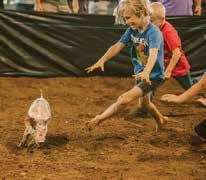







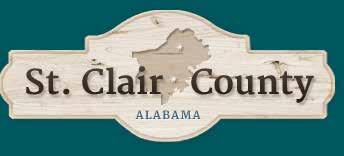



A favorite memory – moss-covered stone walls on a tree-lined path

the first foreigner to walk the Camino. Some 438,683 people completed the Camino via a network of different routes and via different means. While nearly 95 percent of travelers walk the Camino, others travel via bicycle, horseback, sailboat, on crutches or in a wheelchair.
One interesting note: Some famous people have made the pilgrimage, including the King and Queen of Belgium, television host Jenna Bush Hagar and the acclaimed actor Martin Sheen.
There are several different routes for the Camino, all ending at the Cathedral de Santiago. As they get closer to Santiago and the Cathedral, they merge into one trail, crowded with pilgrims. Here is a glimpse of the trails, taken from The Camino De Santiago Survival Guide:
• The French (Frances) Way: This is the most commonly taken route of 780 kilometers from Roncesvalles to Galicia. This route passes through Pamplona, famous for the Running of the Bulls, written about in Hemingway’s The Sun Also Rises.
• Barnett and her group began their 70-mile journey in the town of Sarria.
• The Northern (Norte) Way begins in Irun and passes through Bilbao, San Sebastian and other towns before entering Galicia.
• The Primitive Way: Beginning in Oviedo, this 321-kilometer journey merges with the French and Northern routes near the end.
• The English Way (Ingles): The route, which begins in either Coruna or Ferrol and ends in Santiago is named for the pilgrims who originally traveled from the United Kingdom. The distance from Ferrol is 110 km. From Coruna, the distance is 75 km.
• The Portuguese Way begins in either Lisbon, or more commonly in Porto. The inland route from the Portuguese capital Lisbon is 600 km, 620 km by the coastal route. From Porto, the inland trek is 230 km, 260 km the coastal way.
• The Via de la Plata: The 1,000 km route begins in Seville, Spain and runs inland before arriving in Galicia.


One of the path markers outside historic church





While others will travel all of one of the routes and “rough it” along the way, Barnett’s group traveled with a support van. Hotel reservations along the route were made in advance.
There were checkpoints along the way offering water and snacks and stops for lunch and dinner. Their luggage was also transported. It was somewhat akin to sherpas who aid hikers on an Everest journey.
“I’ve heard it referred to as “Pilgrim Lite,” she said. “We really did have a lot of support along the way, which made it really doable.”
The Camino requires preparation physically, mentally, spiritually and emotionally.
“You know, I don’t think I adequately prepared for it, actually. I was so busy with everyday life and the things I had to do to make sure while I was gone my family was taken care of,” she said. “There was a lot I had to take care of before I could get away.”
At home, she’s also involved at her church, Pell City First United Methodist in trying to help it grow, and she was in rehab for a back injury for six weeks before the trip.”
“I wasn’t as adequately prepared as I needed to be – spiritually, mentally, any of that,” Barnett said. “The therapists helped me get to a point where I could do it without suffering too much.”
The biggest physical challenge came shortly after the long flight from the States to Europe. “On the first day, I got scared,” she said. There was swelling in my lower legs, and the trail was hilly with long inclines and declines. I had a hard time keeping my heart rate down because the swelling was putting pressure on my heart … I wasn’t sure I was going to be able to do it. I just had to take it very slow.”
A pair of compression socks saved her journey. Asked if that first day was the hardest on her portion of the Camino Frances, Barnett said, “Absolutely, it was. After that first day, it wasn’t a problem. But it was still very challenging. That’s a lot of miles, and it was hilly.”
That first day caused her to consider giving up, but the support and advice of her group kept her going. “I was ready to try again,” she said. “I didn’t want to give up.”
For Barnett, the journey was part solitude, part introspection, part fellowship and more, a hybrid of all the reasons travelers make the pilgrimage. She and her group entered Santiago on the Thursday before Easter. After completing her Camino, she attended Easter Mass at the Cathedral of the Assumption of Our Lady in Porto, Portugal.
“It was amazingly beautiful and spiritual to celebrate in Porto’s majestic ancient
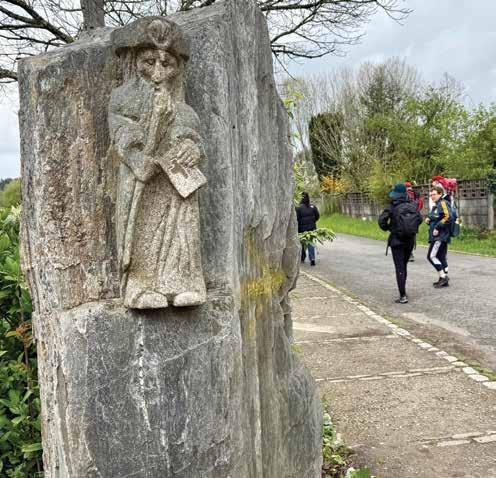

Man makes pilgrimage on crutches, an inspiring part of the experience for
cathedral,” she said.
While that may have been the spiritual climax of her trip, Barnett also encountered inspiration in human form. A pilgrim in front of her was walking slowly, with difficulty.
“As I got closer, I realized he was walking on crutches and carrying a backpack,” she said. “It occurred to me, that whatever issues I had or have in my life, I don’t have crutches. For him to take the journey and make it happen, it just touched me. He was my hero.”
As she came alongside the man, she spoke to him.
“He had the most joyful, radiant smile,” Barnett recalled. “He had some age on him, but here he was doing something that most people on crutches would just consider impossible. And he was happy.”
There were other surprises on the walk. Musicians, alongside the trail, buskers who would happily take a Euro or two tossed into an open cello or guitar case, serenaded pilgrims. Groups of young people sang joyfully or laughed as they walked. Barnett encountered fellow pilgrims from around the world, on the trail and in bars and cafés in the villages along the route.
Nature offered signs of spring and of renewal, a pasture full of lambs or calves.
“It gave me another thought, to take this this time and think about the future and the importance of having this life and how you spend your time,” Barnett said.
As she passed centuries-old buildings, Barnett considered the early pilgrims in ancient days who made this journey.
“They did not have the modern conveniences we have – the high-tech shoes and gear – all the things that we access so easily. What did they do when they had issues? ... We have so much.”
A favorite memory for Barnett is when she walked a treelined path along a stone wall covered in moss. “The moss was glistening, and it looked like carpeting in the shape of the rocks of the wall,” she said. “It was leading you from where




you’ve been to where you’re going. It was a gorgeous, magical fairyland.”
She also warmly recalled the fragrance of a eucalyptus forest, ancient buildings, lovely murals. The Camino experience left her forever changed.
“It gave me a chance to focus on what’s important in life. We get so tied up in the daily routine, grocery shopping and cooking meals, and (the trip) gave me a chance for an inward focus, to think about the things that are important in life and relationships and this big world. There are so many places to go and people to meet. It’s eye opening.”
It helped her realize that “being on the Camino is a lot like life. You have to do what you need to do to get from Point A to Point B each day. But in this scenario, you are in nature all the time.”
And at each day’s end, as she laid down to sleep, she remembered the people, places and things she saw – welcoming people in breathtaking, yet peaceful places.
“It was a good time to take a pause in life, even though I was in motion most of the time. It was a pause for your mind to open up more to the spiritual aspect. Being outside. Communing with nature. Thinking about this wonderful world and God and what He has created for us and the responsibility that comes with preserving it.”
The Camino also impacted her perspective on the world.
“I wasn’t bombarded with news, but staying out of the daily news was good for my soul and good for my mind. (In the news), there’s always the bad and negative things going on. The Camino forces you to focus on the good and the beautiful.”
And when she arrived with her fellow pilgrims at the Cathedral of St. James the Great, she was greeted with cheers and applause. She wept with joy at the memory. They were there with pilgrims who had trekked the entire Camino de Santiago, but that did not dampen her triumphal entry.
“Oh my gosh, that was exhilarating,” Barnett said. “It was pouring rain off and on all day, and it was raining when we got to Santiago. But we were so excited to see the cathedral, to end the journey. About 10 kilometers out you could see the spires of the cathedral. I get goosebumps just thinking about it. It put more energy into our final few steps. … The energy level was amazing.”
It impacted her relationship with God.
“When I feel close to nature, I feel close to God. It’s an opportunity for a conversation with God. It was an opportunity to pray and to meditate while listening to nature.”
She thought of nature and art and history along the way – and the pilgrim on crutches.
“I felt blessed to speak to that man who was making his way at his pace with this huge

2206 Martin St S Pell City, AL 35128-2356
Phone (205) 884-3470 (205) 473-9080
Fax (866) 666-8481
Proudly serving Alabama communities in Pell City, Ragland, Odenville, Branchville, Cropwell, Alpine and Vincent.

From first showing to final signature, Dana guides every step along the way!

5-STAR PERFORMER




smile on his face, and it made me think how blessed I was to be able to do this with a great group of people.”
Barnett offered a quote from Sellers, the yoga instructor who in part inspired her to tackle part of the Camino, a journey of beauty, discovery and the Divine. “It’s not about what you take with you, it’s what you leave behind.”
What did Barnett leave behind?
“I tried to leave stress and worry and take (home) the joy that I experienced.”
She offered counsel to those who may be considering the Camino de Santiago or any other challenge in life. “Follow your dreams,” she said. “If there’s something you want to experience, then make it happen. It’s a great big, beautiful world. Don’t shy away from something that, though it may be challenging, is an opportunity for growth.”
The trip, simply put, was “very nourishing for my soul.”
Quoting Sellers again, she described the magical, mystical journey: “As we venture away from our everyday lives and from the script of a typical trip or vacation, we are invited to open our eyes, hearts and minds to being a stranger in a strange land and see each day as unfolding minute by minute, step by step into a journey of challenge, renewal and hope. In other words, we are off on an adventure, and while it will offer times of comfort and awe, there may be times of challenge and obstacles. It comes with the Way.” l
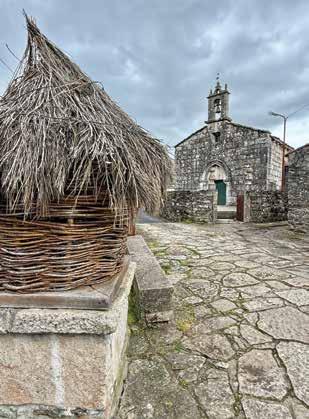


By Roxann Edsall
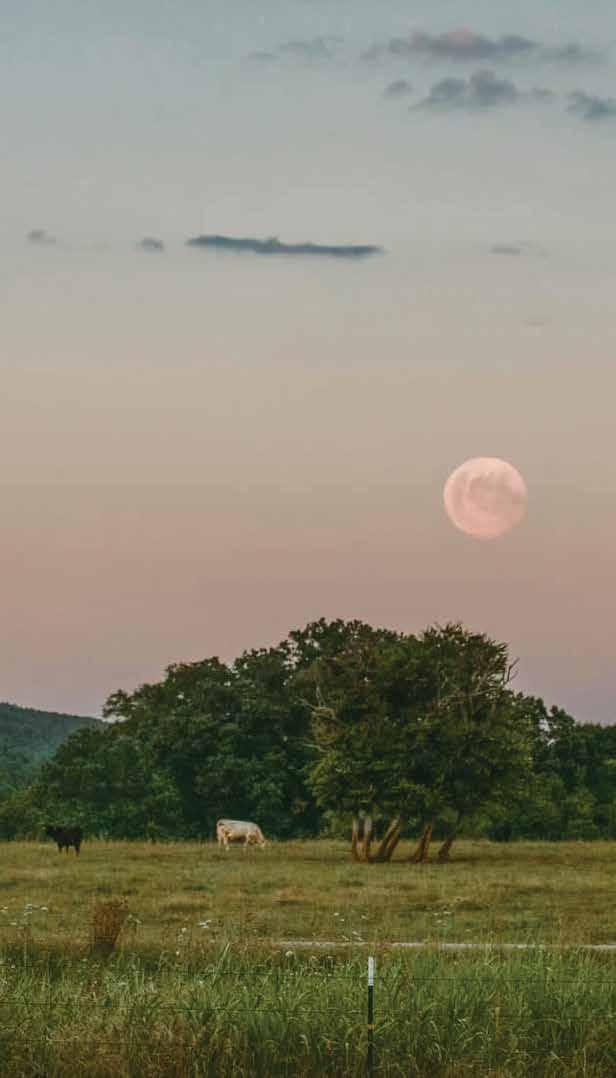
For many, the mention of Chandler Mountain brings to mind images of big, beautiful, savory tomatoes. But the roots of the mountain’s history run far deeper than those lovely fruits or even of those families that have farmed them for generations. Archaeologists are now calling the mountain a place of profound Native American cultural significance, having documented several sites on and around the mountain.
These sites, formally verified by archaeologists over the last two years, include pictographs, which are paintings on stone using the pigment, called red ochre, found in the dirt. There are at least eight documented sites containing pictographs, cairns, snake walls and other various rock formations attributed to the area’s Native American heritage. Next month, archaeologists are planning to visit an additional five areas that may also contain significant indigenous findings.
Those culturally significant Native American findings were instrumental in saving Chandler Mountain residents from the fallout from a proposed Alabama Power dam project. Alabama Power had planned to build a pumped storage hydroelectric facility that would have pumped water from Neely Henry Lake up the mountain to a reservoir and dam at the top, the intent of which was to created electricity by releasing water at peak use times to flow down the mountain to four dams below.
The building and operation of the project would have forever changed the landscape of the mountainside and residents banded together to fight. They created Save Chandler Mountain, a 501c3 non-profit, and began working to build a case to oppose the dam project. “The project was a netnegative program, meaning it would have used more energy than it created,” said Fran Summerlin, the organization’s president. “It was going to get rid of so much
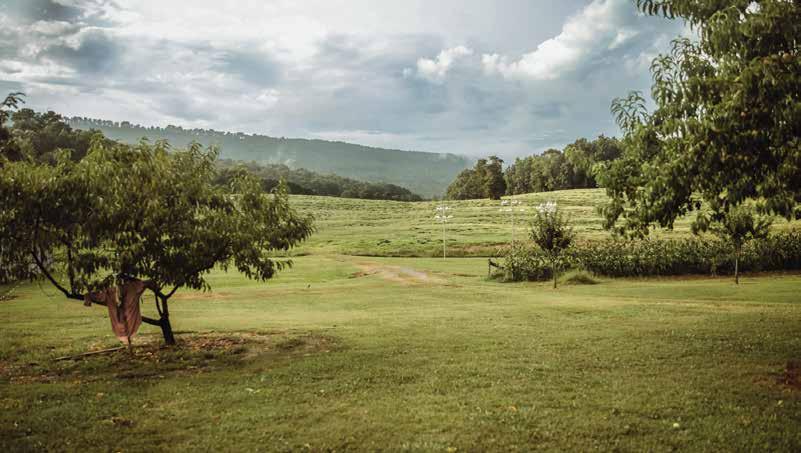
farmland and so many houses.”
Summerlin explained that the organization reached out to archaeologists and cultural heritage people and found common ground with the people who originally lived on the land, members of the Cherokee Tribe of Northeast Alabama. Both current residents and the Indigenous people of the area were desperate to save the land and protect its features.
Seth Penn is a member of the Cherokee Tribe of Northeast Alabama and was, at the time of the proposed dam project, the southeastern coordinator for the Indian Nations Conservation Alliance (INCA). Fighting to promote Native American culture and to protect sacred sites was his mission and that dovetailed well with Save Chandler Mountain’s mission. Penn, who has degrees in both cultural anthropology and natural resource conservation management, with minors in Cherokee studies and language, lives in north Alabama, but has ancestral ties to both Etowah and St. Clair counties.
“Chandler Mountain and that area was a place where multiple tribal territories came together,” Penn explains. “You had the Cherokee people, various branches of Muskogee, as well as Choctaws and Chickasaw too. This was a special place where various tribes would come together to trade and to talk through things and to try to work things out peacefully.”
So, their work together began by inviting noted archaeologist David Johnson to visit the mountain. Johnson, who is from Poughkeepsie, New York, had successfully documented Native American sacred and ceremonial landscapes along the lower Hudson Valley, which was
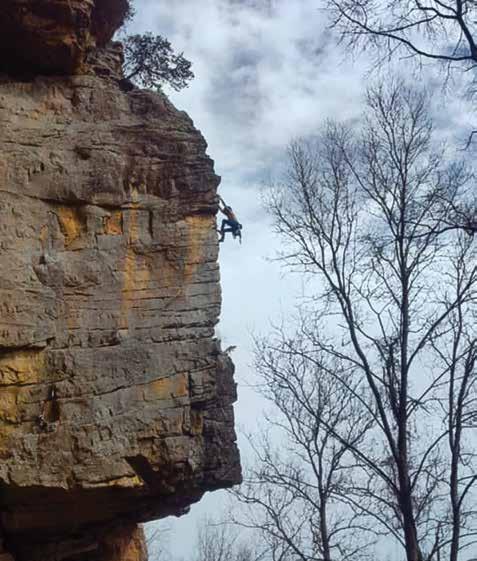


instrumental in saving Split Rock Mountain, a land sacred to the Ramapo Munsee Lenape Nation. “We were having a ceremony celebrating the saving of Split Rock Mountain and Seth Penn and his mother came from northeast Alabama,” said Johnson. “I walked him around that site and showed him the stone features. He said I needed to come to Alabama.”
“I made the drive down to Huntsville and met with Seth’s tribe,” Johnson continued. “Within the first two days, we found two ceremonial landscape sites that the Cherokee Tribe of Northeast Alabama knew nothing about.” It was at the presentation he gave to the tribe about his findings that he met some visitors who came up from Chandler Mountain. “They asked me to come look and I went down for two days for a quick look. What I saw was enough that I went back and have documented eight major sites there.”
The shape of the mountain itself is unique in that, unlike typical mountains that rise to a peak, the top of Chandler Mountain is a plateau, flat at the top with a dip, or bowl in the middle. The shape is a natural occurrence, formed during the creation of the Appalachian Mountains hundreds of millions of years ago. The flat top made the mountain ideal for the ceremonial and tribal activities, according to Johnson, with plenty of room for tribes to meet, to trade, to work through disputes, and to pray.
“You don’t usually find a lot of artifacts at this type of site,” says Johnson. “You don’t find a lot of broken arrows and firepits because that’s not what they did here. This was a special place, a sacred place.” Those types of artifacts, he explains, are found in habitation sites, archaeological sites where cultures lived and slept.
“There are ceremonially significant places on the mountain, as well as in the whole region,” Penn explains. “There are places where you see the presence of that confirmed through various rock formations, art, and things along those lines that are centuries old. It affirms the long-lasting presence of Indigenous people there.” It’s a place that local Native Americans still go to pray. “We go to these sacred places where we are able to stand in present time, but lock arms with our ancestors, the ancients, to pray.”
The land is sacred, too, to those who live and farm the land today. “There are places there with history, with stories, with blood, sweat and tears that have been poured into that land,” Penn continues. “If that dam project had happened, it would have erased the history of Indigenous people from thousands of years ago, but would also have erased a lot of history from the present inhabitants of that land and their families.”
Charles Abercrombie’s family is deeply ingrained in the history of the area. For more than 75 years, he has lived on land on the side of Chandler Mountain that was once part of the homestead of Joel Chandler, for whom the mountain is named. Chandler received the land as payment for his work as a soldier in the Creek Indian War. Abercrombie still has the land grant signed by Andrew Jackson. The land has been owned by the Abercrombie family since 1894, and Abercrombie says he would fight to protect his land from any threat. “When all this started, I went to an eminent domain attorney,” Abercrombie said. “I was

A popular destination – Horse Pens 40 – for bouldering, entertainment, festivals and views






‘Pro Life Doc’ to headline St. Clair Sav-A-Life fundraiser dinner
‘Pro Life Doc’ to headline St. Clair Sav-A-Life dinner
St. Clair Sav-A-Life will host Dr. William Lile, D.O., FACOG, known as the “The Pro Life Doc” as keynote speaker at its annual fundraising dinner Tuesday, Sept. 16.
The dinner will be at NorthPark Church in Trussville. Doors open at 6 p.m. with dinner at 6:30 p.m.
Dr. Lile, a Pensacola physician, believes a patient is a person no matter how small. According to event organizers, he and his team have been able to perform surgeries on babies before birth.

willing to go to the Supreme Court, if I had to.”
He did not have to go to the Supreme Court. As a result of feedback from residents and pushback from Twinkle Cavanaugh, then Alabama Public Service Commission president, the application for the Alabama Power dam project on Chandler Mountain was withdrawn and the mountain, with its beautiful landscape and rich history was saved.
“Bringing these potential cultural losses to the forefront may have contributed to the demise of the project, but important political opposition is probably what made the difference,” says Terry Henderson. Henderson, whose family has been around the mountain and Canoe Creek since around 1850, has lived on the south brow of the mountain for two years. He is married to Linda Derry, a professional historical archaeologist, and worries as much about “unrestrained and uncontrolled visitation” in the area. “These properties, structures, and vistas should be protected through legal, enforceable, verifiable development and access restraints,” says Henderson.
Ben Lyon agrees. He was drawn to the mountain as a rock climber 20 years ago and has lived there for the past 12 years. His property contains red ochre drawings and other findings important to Native American culture. “I believe it’s as important as anything to preserve these,” says Lyons. “It’s one of the few examples of pre-Woodlands depictions in the Coosa River Valley.”
Lyon says saving the mountain and its cultural history is important for the future of the children and for the families who make their living on the land. “There’s a way of life on Chandler Mountain that would have been lost, and about a third of the mountain would have been lost,” said Lyon.
Chandler Mountain is a place of tranquil beauty, a place where families live off the land and spend time in the outdoors. It’s a land of history, of promise, and carries with it the burden of conserving it for future generations. Conservationist Aldo Leopold stressed the importance of that responsibility when he wrote, “The oldest task in human history is to live on a piece of land without spoiling it.” Together, the mountain’s current residents and those representing their Indigenous predecessors have made sure this sacred mountain will not be spoiled.
The mountain is known as the tomato capital




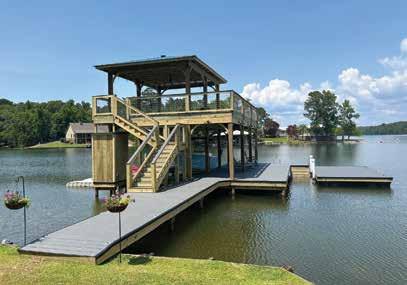




Story by Paul South
Photos by Mackenzie Free
Sometimes nature’s miracles enter our hearts, souls and minds with a bang, like the colors of the Northern Lights, or the Hale-Bopp comet piercing a blue-black sky as it did late in the last century. Both phenomena are greeted by “ooohs” and “aaahhhs,” wows or wordless, wide-eyed wonder.
But more often, time and the elements combine quietly with nature to create something magnificent and mystical.
So, it is with the Chandler Natural Bridge, a place known simply as The Rock Bridge. Located near the base of Chandler Mountain that forms part of the St. Clair-Etowah County line, the natural bridge is one of six named natural bridges and two unnamed spans in Alabama, according to the Natural Arch and Bridge Society.
The Rock Bridge spans Little Canoe Creek. It’s 48 feet long, 54 feet wide and 17 feet thick. The top part of the span is made from Gaspar Limestone. Wind and water erosion sculpted the bridge over millions of years.
Since 2003, Save Chandler Mountain, a nonprofit advocacy group for the mountain, has worked to protect the Alabama’s third-largest peak, which is known as the “Tomato Capital of the World.”
Fran Summerlin, founder and president of the advocacy group, has a special place in her heart for the mountain and for the Rock Bridge. She holds dear childhood memories of her brother taking her to see the bridge when she was only five.
“It was fascinating, I’d never seen anything like it. It was wonderful.”
What made it fascinating?
“There was a big rock that looked like a bridge,” Summerlin said.
“When you think of natural bridges all over the country, they’re always revered,” she said. “People love going and seeing them. (The Rock Bridge) was formed by water, and it’s a fascinating place.”
She talks of Alabama Power Company’s unsuccessful plans two years ago to build a hydroelectric dam there, a move that drew vocal opposition from residents, environmentalists and Native American groups. “If the power company project had gone on, it (the bridge) would have been covered with water,” Summerlin said. “It would have been lost.”
In August 2023, Alabama Power withdrew its application to the Federal Energy Regulatory Commission to operate a Pumped Storage Hyrdro facility at Chandler Mountain.
Locals now have a heightened sense of the mountain’s importance. Darrell Hyatt, too, has precious memories of the bridge – picnics, swimming in the creek and exploring the area. “It should be a state park,” Hyatt said. “It’s beyond comprehension that anyone would consider destroying it.”
Summerlin said Save Chandler Mountain is continuing to research the area and work to find historical and archaeological treasures on the mountain. “We will continue to do that and continue to hope that (the utility) would come to some conclusion that the land needs to be preserved.”
Seth Penn is an environmental and political activist and

enrolled citizen of the Cherokee Tribe of Northeast Alabama. While he couldn’t speak specifically about the significance of the Rock Bridge to indigenous peoples, generally speaking, natural arches and bridges often have sacred meaning for Native American tribes, who often see natural bridges as portals to the upper and lower spiritual worlds.
“I don’t know a lot of specifics about that specific natural bridge itself to really give you a lot of insight,” Penn said. “I can tell you that a lot of natural bridges … and special occurring rock features such as that which occur on the landscape are often seen as portal-type places, meaning they are significant to various indigenous tribes. And often, those are places where certain ceremonies or prayers will be conducted because they do believe sites like that have special spiritual significance.”
Rich Beckman, Knight Chair of Journalism Emeritus at the University of Miami (FL), is president of the nonprofit Natural Arch and Bridge Society. Formed in 1968, the 200-member organization works to protect natural arches and bridges and promote the study, appreciation and preservation of the natural structures.
While the NABS is small compared to other environmental groups like the Sierra Club, Beckman said the organization can “raise a ruckus” when natural treasures like the Rock Bridge are threatened.
“We don’t preserve natural arches, but we do try to help them live out their life cycle without abuse,” he wrote in an e-mail. “So, we are concerned about any planned or criminal destruction by man.”
The NABS joined locals and indigenous peoples to oppose an Alabama Power plan to build a hydroelectric power facility on Chandler Mountain, a proposal opponents of the plan argued would flood Chandler Mountain and leave the natural
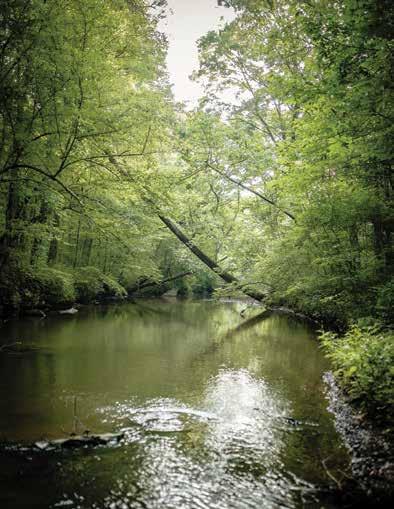






bridge underwater.
In the face of opposition, the utility withdrew its Federal Energy Regulatory Commission permit request and shelved the proposal, at least for now.
“We certainly let the utility know of our disapproval,” Beckman wrote. “(The Alabama Power proposal) would have been a disaster.”
The land where the bridge resides is fenced off by Alabama Power and closed to the public.
However, a portion of the utility-owned land on the mountain is open to hunters under Alabama Power’s hunting license program.
In an email, company spokesman Joey Blackwell wrote, “Through this program, parcels of land across the state are awarded through a public auction program,” Blackwell wrote. “Once a hunting license is awarded to a particular hunting club, the property can only be hunted by its members and guests.”
The utility makes some of its land holdings available for public use, including public access points across 13 reservoirs in partnership with local and state agencies, Blackwell said. The hunting license program is one of those initiatives.
Blackwell defended Alabama Power’s land use practices. “Alabama Power manages its St. Clair and Etowah County property holdings in the same way we work to be good stewards of land across out state,” Blackwell wrote. “Alabama is one of the most biodiverse states in the country, and experts in forestry, biology and wetlands management work together to protect our natural resources.”
Meanwhile, Save Chandler Mountain’s preservation work continues. How can citizens get involved?
“There’s power in numbers,” Summerlin said. “They could join Save Chandler Mountain, get on our Facebook page. We continue to strive to preserve this land. Just get involved with us.”
Hyatt said the mountain and the Chandler Natural Bridge are important, not to be taken for granted. “I was in awe of it, even as a child,” he said. “I didn’t really appreciate this place then as much as I do now. The older I get, the more it means.”
What would Summerlin want people who had never seen the Chandler Natural Bridge to know about the span?
“It Is s magical place,” she said. “It deserves to be preserved. In fact, all of this community and this area deserve to be preserved because it is a holy place for the Cherokees. It has incredible historical significance, not just for the indigenous people, but with, for example President Andrew Jackson took the land and either sold it or granted deeds to people.”
Some descendants of those original recipients still have those deeds, Summerlin said.
“This is a very historically significant, culturally significant, and I would like to say, it’s a sacred place.” l
Editor’s Note: For more information about Save Chandler Mountain, contact Fran Summerlin at fransummerlin@att.net, or visit the Save Chandler Mountain Facebook page or on the organization’s website, savechandlermountain.com. Dues are $20 annually.































by Jerry C. Smith
All artists have their favorite tools. Michelangelo fared well with a hammer and chisel. Isaac Stern worked wonders with his violin bow. For Pell City’s Dale Griffith, the implement of choice is ... needles.
Dale is a prima quilter. She produces bed covers fit for a king – or a queen or twin or whatever size bed you own. For more than 40 years, scores of happy sleepers have enjoyed her meticulously crafted bed-wares.
Born and raised in the sea islands district around Brunswick, Georgia, she moved to Pell City in 1987, where she married Bill in 1990.
She sets a very high standard for her quilts, throws, spreads, comforters, shams, duvets, baby coverlets and many other embroidered and crocheted wares. For instance, Dale never uses anything but pure cotton for her quilt liners and bottom backing sheets. All woven materials must be between 300 and 400 thread count.
The inner layer is always cotton, never the fluffy plastic froth found in most store-bought products. Nor will ordinary thread suffice; she uses a rather expensive, tough, permanent variety
that’s been waxed for easy penetration of three layers of heavy material.
Dale takes a deep personal interest in her work. “I want my quilts to produce warmth, and peace of mind,” she says. “Only the best will do.”
As one might imagine, such standards require much time and concentration. Dale only works on her quilts when she is feeling good, with no outside conflicts to diminish her focus.
She can pursue her craft with all kinds of extraneous background noise, such as conversation, TV, etc., but that’s not her ideal work environment. “My favorite way to quilt is on a nice day, with the windows open and nothing but fresh air and the sounds of nature.”
There are so many technical considerations when making even the simplest of quilts – even more so for some of her special custom designs.
Dale shops relentlessly for the finest materials, traveling all over our part of the state to search for topping fabrics, inner liners, bottom sheets and specialty items. She takes quality very seriously and refuses to skimp on any part of her creations and designs. “I need to actually feel the fabric before I buy it,” she adds.
One of her favorite quilts is in daily use in Scotland. It’s a
custom design showing the colors of that country along with one of their native plants, the thistle. Dale made another quilt for an East Coaster, with embroidered squares featuring fish, lighthouses, nautical implements and edged with real rope. She’s also made special Roll Tide spreads, as well as others whose tops are made up of copied photographs, ink-jet printed onto special fabrics.
Dale makes everything from baby quilts to throws, twin, full, queen, king and California king sizes. There is no easy way to create such things, nor are their components inexpensive. Each one involves interminable hours of delicate, tedious, exacting hand work. For instance, a regular queen size pattern quilt can involve as long as two months of daily labor!
When asked how many yards of thread are needed for a queen size, Dale estimated three large spools with 10 bobbins for the top, and at least six spools for the final assembly. Each spool is 255 yards. This comes to some 2, 295 yards, or roughly 1.3 miles!
And those nine spools can be as much as six dollars apiece. There is scarcely a square inch of quilt that doesn’t have a stitch running through it. That’s what keeps the liner from bunching up inside.
So, how is a quilt made? First, all the tiny pattern pieces for the top must be cut from various fabrics or produced from printed cloth or even old souvenir T-shirts. These must be accurately sewn together into a number of pattern squares of equal size.
In olden times, every part of a quilt was sewn by hand, but nowadays the tops are usually sewn with a special machine. Dale uses a Baby Lock designed for that purpose. When enough squares have been created (sometimes as many as 88), they are then stitched together into a single piece the size of the quilt.
Once the top has been assembled, the real work begins. Every part of the quilt must be hand-stitched together as a unit, with a needle pulling thread through the combined thicknesses of top, liner and backing sheet. This is usually done on a quilting frame, of which there are many designs. Dale’s husband, Bill, made her a rather ingenious one, using PVC pipe.
Dale says that most buyers balk at the asking price but, when given the actual materials cost as well as a couple months of tedious labor, her products would be a steal at double her prices. Anyone who has ever actually made a quilt will gladly accept, especially after examining the superior quality and durability of the finished product.
Dale loves chit-chatting with other quilters. She can be searched on Facebook as D Dale Griffith.
Besides looking great on one’s bed, there is another factor that makes her quilt special – the almost instant warmth experienced a few seconds after crawling under the covers. Because of the choice of fabrics, her quilts do not draw away body heat. They simply capture it and give it back all night long, thus fulfilling Dale’s mission of providing warmth.
The peace of mind part of her wish list comes every night, as one experiences that warmth as well as reminiscence of the heirloom quilts that comforted many of us in our earlier years. Little in life is better than a good night’s sleep, especially under such fine bedding.
A good quilt is made to last and be treasured for several generations. Dale has successfully repaired worn bed covers that were hand made in the 1800s.
Your writer is the proud owner of a Dale Griffith patchwork bed cover that is the perfect complement for my old steel and brass four-poster that’s been in my family for several generations. For me, at age 82, it’s like a sort of time machine that provides comfort on several levels.
“ I want my quilts to be used, not stored away,” she declares. “They are household items, not keepsakes. I make them to last, so there’s no reason not to use them.” l


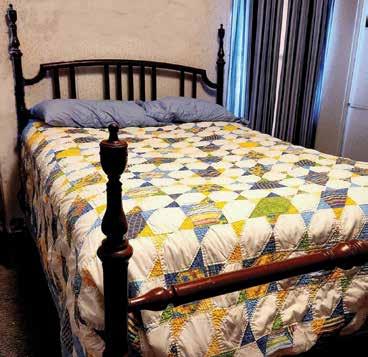




“When my mother had the beginnings of dementia, she was in Birmingham, and I was in Pell City. Working full time, I couldn’t be there. But Always There could, and they helped her with the things she needed to remain independent -- taking her grocery shopping, making sure she got the right medications at the right time, being a companion. Always There allowed her to stay in her own home and took the worries away from my siblings and I when we couldn’t be there for her.”
-- Carol P.
• Companionship • Bathing and Grooming
• Care Management • Dressing
• Errands • Escorts for shopping
• Laundry and appointments
• Light Housekeeping • Meal Preparation





St. Clair Agriculture & Multi-Event Center is so much more than original rodeo venue
Story by Elaine Hobson Miller
Photos by Mackenzie Free
The St. Clair County Arena in Odenville has been home to rodeos and agricultural shows for many years, but today, it is so much more. Over the past 12 months, it has hosted a dog show, a vintage market, a circus and a county fair.
The Event Center next door is a pickleball mecca to rival any courts in the county.
In other words, the Arena ain’t just a place for agricultural shows anymore. The official title may give a hint to the depth of its overall scope: St. Clair Agriculture and Multi-Event Center.
“We wanted more than just an agricultural center,” says County Commissioner Jeff Brown. “And that’s what we have. We can do a dog show one day, a circus the next. I give (Arena Director) Ashley (Hay) a ton of credit. She’s easy to work with. The original board that ran it needs credit, too. It started from nothing.”
The county bought the Arena, 25.6 acres of land and an office building in 2010 from Randy and Michelle Spence for $551,197. For 11 years, it was used for rodeos and other horse-related events. During COVID, the county received a $1 million federal grant to build an emergency facility, called a Pandemic Center, that they could operate from in the event of a natural disaster. That grant changed everything.
“I came aboard in 2021, and the grant had already been awarded,” says Hay.
“The county commission looked for a way to use the grant to best help the entire county. Only the Arena was here then.”
Hay says that grant required a large, unobstructed space, restrooms, as well as storage to be utilized by EMA. The county commission looked for ways that the facility could be used for more than just emergencies, though. This led to the addition of a sport-court surface, bleachers, retractable basketball goals and equipment for volleyball and pickleball in the Event Center.
“This building was attached to an existing older building that had administrative offices and the cowboy church,” says Hay. “The concession stand with restrooms and showers was built a while ago.”
Both the Arena and the indoor, 12,000-square-foot Event Center are membership facilities available to anyone. “We have a lock box for daily use, or you can sign up online. We have about 100
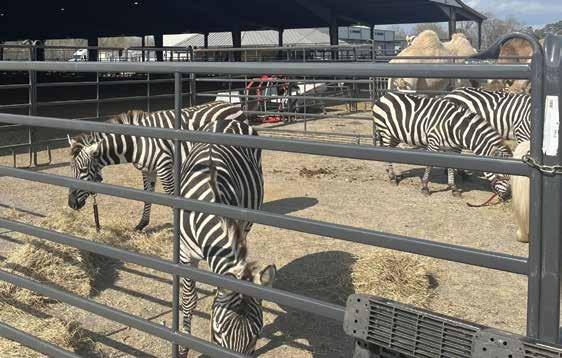




Getting ready for competition

A day at the race
Everything you need for horse care

members right now. The cost is $100 for an annual membership, but daily memberships are obtainable, too.”
Pickleball players have five days a week to play their favorite game. “They are pretty dedicated folks,” Hay says. “And they say ours is one of the nicest facilities within 100 miles. We have pickleball classes, but we don’t have programs, so we’re able to offer more open gym time.”
The Event Center offers summer membership for kids, too. The Center’s Facebook page is the best place to check out the schedules.
“We’re the only arena in our area that I know of that allows open rides as much as we do,” Hay says. “Horseback riders can come any time between 6 a.m. and 10 p.m. When they register, they get access to opening the gates. We have 80 horse-riding members. One woman comes with her baby at 6 a.m. because it’s the only time she can.”
Originally, the county created a parks and recreation board to run the facility, appointing Lude Mashburn of Odenville, the late Hershel Walker of Argo, Don Smith of Springville, Brad Sanders of Odenville and Kenny Womack of Riverside as members. A couple of years later, Womack was replaced by Jimmy Hollander, also of Riverside. The board elected Mashburn as chairman.
“The county had a vision, and they appointed the board to run it,” says Mashburn, who was an agricultural science teacher at St. Clair County High School at that time. “They turned everything over to us, and we ran it. We put in the dirt for the Arena floor, bought a tractor to keep it compacted during rodeos, all that. But the county never funded it for the 10 years we had it, except for building the restrooms and the bleachers. Then things kinda changed when the county got COVID money.”
The board was officially dissolved on February 10, 2022, and the property and facility are now funded and managed by the St. Clair County Commission, according to County Administrator Tina Morgan. Board members at the time of dissolution were Chairman Lude Mashburn, Jimmy Hollander, Brad Sanders, Candi Jones and Donnie Smith.

The Literacy Council of St. Clair County offers a helping hand with FREE programs: The Literacy Council of St. Clair County offers a helping hand with FREE programs:


• Adults learning to read or improve reading skills
• One on one reading classes
• Classes to help with reading skills and comprehension of what you have read
• GED preparation
• ESOL Classes (English for Speakers of Other Languages). Every Tuesday night on second floor of Pell City Municipal Complex (above the Pell City Library)

Buckle Series barrel racing

The county covered the bleachers and Arena, added lights and industrial overhead fans. The bleachers seat 800, with extra seating brought in for rodeos, pushing that total to 1,200 seats as needed. The Arena itself is 22,000 square feet. “In March, April and May, then again in September, October and November, there’s an event every weekend,” Ashley Hay says. “We have had car shows, a community yard sale, barrel racing, ranch sorting, a pig squeal and a county fair.”
Youth timed events such as barrel and pole races and goat tying are still held there. “We have more equine events than anything else at the Arena,” Hay says. “We also have lots of banquets in the Event Center. We’re working on grants for developing the 12-15 acres at the back of the property, including a multi-use trail for walking, horseback riding and bicycles. We also want to do RV hookups so folks can park for the time they are in a show.”
Hay’s background is in parks and recreation, having worked for the city of Springville before St. Clair County. Originally from Kansas, she moved here in 2018 because her husband is from Alabama. “I was a high school volleyball and basketball coach, then got into parks and recreation after that,” she says. “I really enjoy it. I started and grew the parks and recreation program in Springville. Then they asked me to do the same here.”
Under Hay’s management, the facility has added a wash bay, industrial fans, lighting, an uncovered, warm-up pen behind the Arena, and everything inside of the Event Center. It has improved parking







and upgraded the PA system, too. Hay added a Facebook page and advertisements on Radio Station 94.1. “I feel like things are running well,” she says. “We’re trying to expand the types of programs we have.”
Besides all the public functions, the Arena and Event Center are available to rent by individuals for volleyball and basketball games, for wedding receptions, banquets and other private events. “We have had a wedding, and they brought horses,” Hay says. “The wedding was in the back pasture, and the Arena was where they held the reception. It’s a $750 fee for two days’ rental, and that’s dang cheap in comparison to other facilities of similar size.”
The Arena hosted a circus in February 2025, and the Gala of World Horses in the Fall of 2024. “The Gala had never been to Alabama before,” Hay says.
At least two dozen trailers were parked outside the Arena for a recent Buckle Series, a barrel racing event. Several horses stood tied to trailers, munching hay from their hanging bags. Riders walked their horses in circles, getting them ready for the event. One of those riders was Emmaline Puckett, 9, of Ashville. She has been racing since she was five or six, and like most of the other competitors, usually comes early to put her horse through its paces.
“We’re members here, so if the weather is bad, we come over here to practice barrels,” says Emmaline’s mom, Christina Puckett. “We’re very thankful for this place.”
Tyler and Jayclyn Cobb of Blount County came to watch the barrel race, even though Jayclyn couldn’t compete as usual because her mare has been bred. “We love coming here, Jayclyn says. “It’s covered, shaded, not as hot as other places.”
“A lot of people have really done a great job with the Arena from the get-go,” says Commissioner Brown. “The board members deserve a lot of the credit. We (the county) had the ideas, and they made it happen.
“That board served for free, put in a lot of hours, even parked cars during events. They deserve all the credit.” l



200 years and counting

Story by Joe Whitten
Photos by Wallace Bromberg Jr.
Submitted Photos
Eden. What a lovely name for a town. It calls to mind the biblical Garden of Eden with visions of fertile soil, lush gardens, exotic flowers and green groves of sheltering trees.
One wonders if, in the first quarter of the 19th Century, the settlers to this area saw it like that. Probably not, for trees must be felled, new ground cleared and cultivated, houses and barns built, but it was a place of promise.
It’s uncertain when settlers first began migrating to today’s Eden, but family by family, a community formed. As the 19th Century progressed, businessmen opened stores and shops, and by 1900, it had become the town of Eden.
An April 4, 1906, Pell City Times article records that “…Eden…first bore the name of ‘Manchester,’ but there being another Manchester in the state, it was changed to Eden.”
Personal help with knowing the history towns and churches. In June 1970, Lailah Harris, in a letter to Mrs. E. N. Vandegrift of Oneonta, AL, wrote that although Eden eventually became a part of Pell City, it was a town “before the Civil War.” She also wrote that family tradition says Eden “…was so named by the Inzer family who came from Georgia to Alabama.” The Inzer family’s English ancestral roots were in Edensor, England, implying they left off “sor” and kept Eden as the town’s name. The online link letsgopeakdistrict.co.uk/listing/edensor states that “Edensor” is pronounced “Enzer.”
Mrs. Harris’ great grandfather, Henry Inzer, and his siblings, LaFayette, Mark, Jim, John and Cathrine all settled in St. Clair County. “They lived on Wolf Creek and made their living mostly from the land, although my great grandfather Henry was a preacher, blacksmith and worker in wood and metal.” He served as New Hope’s pastor in 1877.
Early settlers needed fellowship, and churches fulfilled that need. By 1824, enough families had settled in today’s Eden to organize New Hope Baptist Church as the only Baptist church in St. Clair County’s Coosa Valley.
It was the second documented Baptist church established in the county. Mt. Zion Baptist (now Springville First Baptist) was established earlier in 1817. In the 1820s, to go from Eden over Bald Rock Mountain to worship at Big Springs (Springville) would have been difficult and dangerous.
New Hope is a grand name for a church in a new land, for it expresses the hope of God’s blessings in the years to come. The organizational date of 1824 comes from the 1853 Coosa River Baptist Association which met at




Spring Creek Baptist Church in Shelby County. That year for the first time, the association asked for member churches to record the year their church was established, and New Hope’s date was listed 1824.
Hosea Holcomb, in his 1840 History of the Rise and Progress of Baptists in Alabama, gives some early history of the church: “New Hope in St. Clair County was formerly in Mount Zion Association, but united with the Coosa River (Association) in 1834. They have always, until recently, been a small band. Their number has increased considerably … Elder William McCain labors with them in word and in doctrine.”
Rev. William McCain was the first recorded pastor of New Hope, and we know much about him from his obituary written by Samuel Henderson and published in the March 11, 1883, issue of The Alabama Baptist.
Here are highlights: “Among all the ministers who have lived in the bounds of the old Coosa River Association … none have surpassed William McCain in effectiveness of ministerial labors. With scarcely education enough to read English correctly, he achieved a position in his calling that opened every pulpit in the region. … Learned and unlearned, lawyers, doctors, and merchants, mechanics and farmers, rich and poor, all flocked to hear him. …Although he never pronounced a grammatical sentence in his life, knowing it to be such, yet behind his broken English and awkward phrases, there was an unction and power that lifted his hearers above all his imperfections of style and delivery. …His thoughts would glow with a brilliancy and come with a power … entrancing and overpowering. He would sway vast congregations like fields of waving grain in a brisk wind … The salvation of souls was his passion of his life, and to this he consecrated his whole life.”
For church building locations, oral history provides clues.
In his History of the New Hope Baptist Church, 18241972, Curtis Rush quoted information about the first building provided by Pauline Baker from an April 14, 1964, letter written by Rev. B.W. Inzer. “The oldest thing I ever heard about a church at Eden, Uncle Fealy Stewart told me about 1935. He said, ‘I used to walk down here when I was 7 years old and older with my Grandma Mullins. She told me about the only church anywhere in this area was about where Jim Stevens built. It was (of) logs, and split logs and boards made the seats, windows and doors.” The exact location of this building remains uncertain.
In the same letter, B.W. Inzer wrote about the second building, relating what Andrew Ginn told him about it. “He (Ginn) said when he was a small boy, he attended the First Baptist Church, which was later called New Hope, as we know it. It was at the foot of the mountain in front of the Jim Kilgroe place.
He said he would never forget seeing all the men stand their shotguns up in the corners of the church. They brought them for two reasons: There had been rowdy fellows molesting the services, and that must stop. Then after the services on Saturday, they would go out and kill deer which they would barbecue, and all had a feast.”
For Rush’s history, New Hope’s oldest member at that time, C.S. Alverson, wrote down his recollections of the third building. “I remember attending New Hope Baptist Church when I was just a boy (1880s). The building was on the site where the pastorium is now. (Today, the church gym is in that location.) There was one road called ‘Mud Street’ now Wolf Creek Road and the church building faced this road … The windows had no glass panes but only wooden board shutters and board doors. The floor was dirt.”
The fourth church building was constructed in 1888 and had two front doors and a back door. It was well-built, for a tornado in April 1929 twisted and damaged the church, but it was so sturdy that it did not collapse and, as recorded by Rush, “Miraculously, the building was straightened up and put back in good repair.” This was completed by the men of the church under the guidance of “Mr. Coach, a carpenter from Pell City.”
In 1937, the church gave the 1888 structure “a complete face-lifting.” They added a balcony with two Sunday school rooms, and on the first floor, a vestibule and two more Sunday school rooms. This fine old building served New Hope until the church erected a new brick sanctuary in 1949.
Memories of the 1888 building are found in the Oct. 17, 1996, St. Clair News-Aegis article by Ann Boone. Olivia Vick, then 85 years old, told Boone how she had attended New Hope for 81 years. “We went to church in the morning and had Sunday school in the afternoon … There were two front doors, one for the men and one for the women, and no one ever went through the other’s door.”
Recalling the 1929 tornado, Mrs. Vick said, “My mother always took flowers every Sunday, and when we looked in the church (after the tornado), we saw that her flowers and the vase they were in on the Communion Table were still there and unharmed.”
Mrs. Vick’s favorite New Hope memory was her salvation. “Newt Butterworth explained the plan of salvation to me … This was when I was 16, and we went down to Barber’s Creek (for my baptizing). I wore a light blue dress. It was August, so
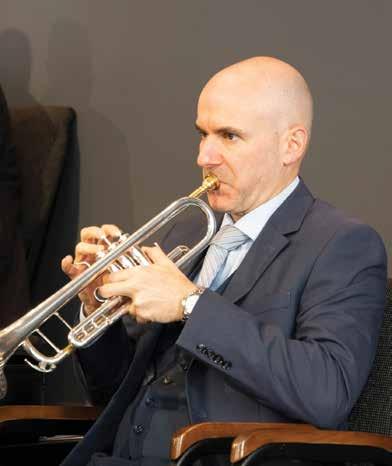
the water wasn’t cold. Afterwards we went up and had church.” Newton “Newt” Butterworth’s death remains an intriguing part of New Hope’s history, as recorded in his obituary published July 25, 1935, in The Pell City News. “N. A. Butterworth Dies while Testifying. Mr. N. A. Butterworth died suddenly in the New Hope Baptist Church at Eden yesterday (Wednesday) while testifying in a revival service. Mr. Butterworth was 77 years old and was one of the oldest members of that church of which he was also a deacon. His last words were “I never felt happier in my life than I do this morning” and fell to the floor. … Burial will be at Mt. Carmel Cemetery.”
Included in the New Hope Baptist file at the Ashville Museum and Archives is a photocopied article titled, Pioneer Passes while Talking for the Lord, by Eloise Bowman. It noted that Butterworth prayed many times, “…‘Lord, let me die in the harness.’ (i.e. active until the moment of death) … (T)he Lord answered his prayer … when with his Bible under his arm, God called him home. He fell dead in the church.”
For a man to die in front of a congregation during a service would be a frightening object lesson that life is uncertain, and death is sure.
Weeklong revivals were standard events in Baptist churches until about the 1970s or ’80s, when weekend and four-day revivals came into vogue. These yearly revivals usually resulted in conversions, baptisms and additions to church membership rolls.
In Rush’s history, he records that in 1864 during the Civil War, there were 41 baptisms and in 1866, a year after the war ended, there were 49 baptisms. These numbers are above
average, for national conflicts and tragedies often draw people toward God and the church.
Churches ran revival announcements in local papers such as the one for New Hope in the April 7, 1955, St. Clair NewsAegis, “The revival at the New Hope Baptist Church will begin April 10th and continue through April 17th. Rev. Douglas Dexter will bring inspiring messages.” The announcement lists the titles of nine sermons, including the concluding one, Alibies, Lullabyes [sic], and Bye-byes
Often in the 1950s and ‘60s, a traveling evangelist would hold a citywide tent revival with local churches promoting the event. Curtis Rush’s daughter, Margaret Rush, recalls one conducted by Evangelist C.J. Daniels from Orlando, Florida.
A May 16, 1965, Anniston Star article, Crusade Is Slated, reported about Daniels’ tent: “A unique poleless canvass cathedral with a seating capacity of 2,000 and auxiliary seating for another 2,000 has been erected on a lot just north of downtown Pell City on Highway 231 across from the dairy Queen … Dr. Daniels will be preaching with music directed by Dr. Lowell Leistner with John Roe at the organ.”
Margaret Rush recently recalled that Daniel’s promotional man, who came ahead to get things organized drove “…a Karmann Ghia car, and I had never seen one before. I thought it was very special.”
Daniels didn’t leave attendance to chance but promoted his revival wherever he went. Margaret remembered, “He had a plane – just a small plane – and he would take people up and show them the county from the plane. I went up with him… That was the first time that I’d flown in a plane.”
Daniels’ revivals were attended by throngs of worshipers as well as sight-seekers.
and All-Day Singing.
Two other annual events were also observed on the same Sunday at New Hope in days gone by – the All-day Singing and Homecoming. No record exists stating when this second Sunday June event began. The June 7, 1945, announcement in The Pell City News reported, “Even the oldest of the old-timers are unable to say when the Eden Annual Homecoming started – 50 or 75 years ago, perhaps longer, most of them guess. No one seems to know, and no one cares much as long as the ‘Second Sunday’ celebration continues.”
In 1920, The Birmingham News reported the event in their June 14 edition. “Many citizens of Birmingham, Bessemer, Anniston, and other points who were formerly residents of St. Clair County attended the annual singing and homecoming at the Baptist church at Eden Sunday. Fully 2,000 persons were on hand. James Garrett, Circuit Court Clerk of St. Clair County, presided. Austen Hazelwood of Eden, one of Alabama’s sacred songwriters and singers, assisted in directing the music.
“Mrs. Lloyd Garrett, James Ragland of Pell City and Marvin Truitt of Anniston were among the leaders in the music. Rev. R.F. Funderberg of Cropwell, pastor of the church, was in charge of the devotional services. The affair this year proved one of the most enthusiastic ever held at Eden.”
The 1954 New Hope singing-homecoming announcement in the June 10 issue of St. Clair Times, reported that on Sunday, June 13, “…The Bama Boys will be guest singers. Also, local groups will be featured … Lunch will be served at noon. All attending are urged to bring a well-filled basket (of food).
In the May 25, 1951, issue of the Southern Aegis, Editor Edmund Blair reminisced about Homecoming at New Hope. “They come from far and near and from various states for this


Two Baptizings photos taken from Curtis Rush’s 1972 history

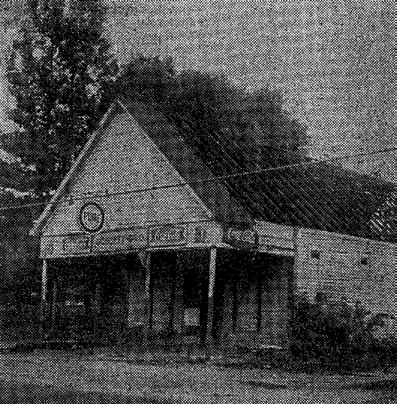
Old Laney Store building was later home to Barber’s Grocery. The photo from 1968 shows timbers missing when it was dissassembled
event.” He noted that folk would come in automobiles, but in the past “…mules and horses hitched to wagons, buggies, and in some cases, shiny black surreys were the chief method of transportation.”
These events were church and community reunions and were anticipated with excitement because attendees would see friends they had not visited with since last year’s homecoming and singing.
The folk found spiritual food in the church building and baskets of food at lunch with “dinner on the grounds” of the church. So, newspaper announcements encouraged women to bring “well-filled baskets of food.”
A June 7, 1945, announcement in The Pell City News mentioned the gas and food rationing of World War II. “Because of the transportation limitations, the crowd won’t likely be as big as in pre-war years, but every friend of Eden will make every effort to be present, and many have no doubt been saving their gas rations for this special day. Likewise, because of food rationing, many items that have in the past graced the bords at the dinner hour won’t be served, but there will be plenty to eat.”
Progressing through the years.
Population growth in the Eden-Pell City area necessitated additional construction. A new worship center was completed in 1997, and a Family Life Center and Gym in 2007. The 1949
structure serves as the Youth Room and the Senior Adult Sunday school room. As New Hope enters the beginning of its third century, plans have been laid for further expansion of the church campus.
On Sunday, October 20, 2024, New Hope celebrated its 200th birthday. As the 10 o’clock hour approached, a sense of excitement permeated the sanctuary. Church members greeted one another and made sure nonmember attendees felt welcomed as well. No one was excluded.
Proclamations from Pell City mayor and council were read, and a video proclamation by Dr. Lance from the Alabama Baptist Convention were presented prior to the beginning of the worship service.
After Scripture reading of Psalm 100, the Celebration Choir sang the Call to Worship hymn, Great is Thy Faithfulness, directed by Joseph Smith with Hanna Stough at the piano. Especially effective was Dr. Michael Averett’s trumpet obbligato, which underscored the hymn’s proclamation of God’s faithfulness. The concluding crescendo of choir, piano and trumpet brought approving applause and exclamations of praise.
After Greg Davis, chairman of the Bicentennial Committee, welcomed the congregation, Joseph Smith led the packed house in singing How Great Thou Art and To God Be the Glory. The singing of those wellloved hymns “raised the roof,” as old-timers would describe it. The male quartet with Greg “Skeet” Davis, Joseph Smith, Matthew Pope and Brandon Haynes harmonized the old hymn Brethren, We Have Met to Worship. Their rendition resulted in applause and vocal affirmation throughout the sanctuary.
After the congregation sang three praise and worship songs, St. Clair County Baptist Association Missionary Dr. Danny Courson gave greetings from the association member churches before reading from Joshua 4:4-9, the Scripture for transitional pastor Dr. Bob Weber’s sermon, Memories, Markers, Mission.
The Joshua passage recounts the Israelites crossing the Jordan River on dry land as they enter the Promised Land, and God instructing them to gather stones and build a memorial of that event. Dr. Weber spoke of the importance of memories and memorials in the lives of Christians, and that they should honor God’s blessings in their lives, the most important one being when they came to a saving knowledge of Christ. These blessings from God should be recounted to children and grandchildren and memorialized by parents and grandparents.
At this point in the service, 12 families brought stones to make a symbolic memorial to what God has accomplished through New Hope Baptist. Taylor Funderburg and children, Everett, Hadley and Findley, representing a first-generation family, laid the first stone. Husband Tyler missed because of his work. The Pope family of four generations laid the 12th stone. They are, from oldest to youngest, Gilbert Stuart, John Pope, Matthew Pope, and Glover Pope. This element of the bicentennial worship was modeled after the memorial stones recorded in Joshua 4:20-24. This memorial will be placed on the church campus in days


Gossett store. Fate Gossett, Sr.; George Barber; Julie Barber; and J. T. Bowman, taken in 1946

to come.
The service continued with Dr. Weber admonishing the congregation that the church doesn’t rest on memories and memorials, for the membership is involved in New Hope’s stated mission – “To Worship Christ, Serve Others, Share the Gospel, and Disciple Believers.”
The service closed with the singing of Victory in Jesus, joyfully accompanied by piano and trumpet. Afterward, Johnny Gregg prayed the benediction and thanks before “dinner on the grounds” served in the FLC.
The history of a church is a history of God’s providence over a people whom He brings together to accomplish His purpose in a community.
As members die or move their membership for various reasons, God brings others to take their places, and the church continues to progress.
For a church to continue for 200 years is evidence of God’s blessings on those who organized New Hope in 1824. And although To God Be the Glory was not composed until 1872, every generation before and after would affirm its words: Praise the Lord, Praise the Lord Let the earth hear His voice, Praise the Lord, praise the Lord, Let the people rejoice Oh, come to the Father through Jesus the Son, And give Him the glory, great things He has done.
And by God’s gracious providence, the church will sing that hymn 100 years from now when they celebrate their tricentennial.
To God be the glory, for indeed great things He has done at Eden New Hope Baptist Church. l

Glover and Sarah Stewart with the church’s anniversary cake

new
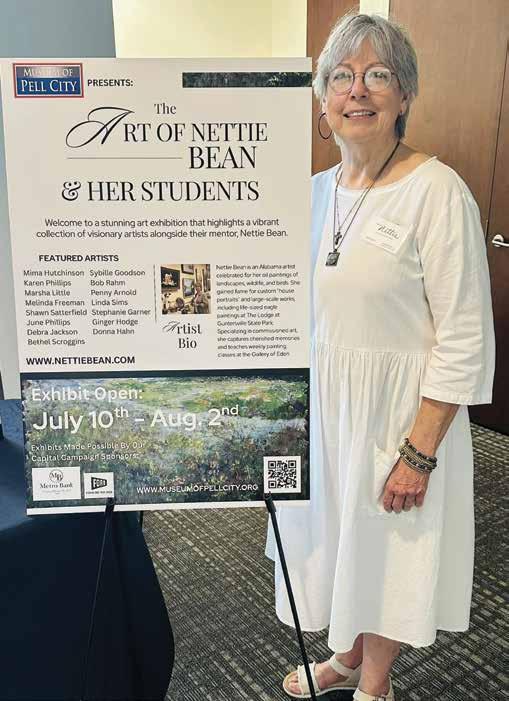
From the work of budding student artists to seasoned professionals, a burgeoning art community is finding a home at Museum of Pell City.
The museum has already hosted the Helen Keller Foundation of Alabama Art Show twice with plans to bring it back in September. Featuring the creations of students across the state with visual impairments, blindness, and/or deafblindness, this show is growing in popularity in Pell City because of these inspirational works.
The museum has presented the annual Duran Junior High School Art Show as well, giving students a home to display their works for the public to see.
Now comes the next level – providing a home for the entire art community.
“Our community is so blessed with talented artists of all mediums, but artists have long lacked a place they could call their own in terms of shows,” said Museum President Carol Pappas. “Before we even opened our doors in 2022, we talked of an eventual evolution to cultural arts center. Yes, we are a history museum, but we recognized the need to expand our reach and become a center for the art community, too.”
The museum’s board invested in infrastructure to create gallery space leading into the museum with a hanging wall system, ideal for shows and art displays. Because of the mezzaninetype venue, it is prominently visible to museum goers, but it is also piquing interest from the heavily traveled lobby of the municipal complex.
“It gives us an opportunity to reach more people – more opportunities to expose these creative works to the public,” Pappas said. “We’re excited about the potential.”
To kick of what the board hopes will be a regular event, noted artist Nettie Bean of Gallery of Eden and her students were the inaugural show, which opened in July and continued through early August.
Bean is an Alabama-based artist who creates stunning oil paintings of landscapes, wildlife and birds. After college, she became known for her “house portraits,” painting door-to-door for clients.
Her life-size eagle paintings are displayed at The Lodge at Guntersville State Park.
She is passionate about teaching and conducts weekly painting classes at the gallery she owns with husband Wally Bromberg.
Bean said she believes that art is a gift meant to be shared, and she strives to

year, moving to the newly created art space

A sampling of the creative works from the showing

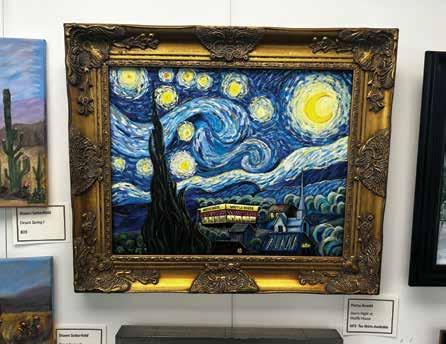
make original art accessible to all. “That’s precisely what we’re trying to do through this new program to showcase our art community at the museum, one we hope will grow and thrive for years to come.”
The Helen Keller Foundation of Alabama Art Show is slated for Sept. 11-27.
More exhibits on the way
In addition to its latest venture into art, the museum is planning even more events in the months to come. It will unveil an outreach program this month that puts mini-exhibits in public places like schools, city hall and county courthouse. “The idea is to give the public a glimpse at what they might find at our 4,000 square foot museum,” Pappas said. “People just don’t realize the depth and scope of our museum, so we want to take it to them – at least a little part of it.”
The outreach exhibits’ theme is Find it at Museum of Pell City, and it shares nuggets of the historic stories, photos and artifacts we have to offer through compelling, custom-designed displays. They encourage people to find out more at the
museum, which is open Thursdays and Fridays, 10 a.m. to 4 p.m. and Saturdays, 10 a.m. to 2 p.m. Admission is always free.
Coming soon is a model train exhibit that has been built by a team of volunteers over the past several months. The 17-foot display with a running train depicts the 1920s version of Pell City.
“It all began with a train,” Pappas noted, referring to the ‘first’ founding of the town in 1890 when Sumter Cogswell missed his train to Talladega, spent the night in Pell City and envisioned a town.
Nationally known artist Dirk Walker has donated his original painting of one of the train depots, and the board will be using it as a fundraiser for the museum along with selling numbered, matted prints of the original.
“We owe Dirk a debt of thanks for his generosity,” Pappas said. “He and his wife, Debbie, have been so supportive of our efforts. You can see all about him and his work in our museum, which features Pell Citians who have made a national name through their talents in art, music, sports and film.”
In November, the museum presents its annual Salute to Service, which will see its military section redesigned and expanded to better cover modern days wars in the Persian Gulf, Iraq and Afghanistan.
It also will feature oral history videos from local veterans and St. Clair County District Attorney Lyle Harmon as keynote speaker at the Nov. 7 special program. He is a veteran of the second invasion of Iraq in the101st Airborne Division, 217th Calvary. He was a helicopter pilot flying reconnaissance missions.
“As you can see, we have lots in store for museum goers,” Pappas said. “Like history, it evolves. We aim to keep our programming fresh, giving people a reason to come and come back again to discover our rich history.” l










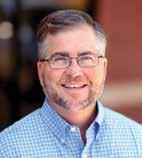



The

Story by Carol Pappas
Submitted Photos
In today’s corporate-driven medical care climate, Pell City’ s Dr. Rock Helms is forging a new path in healthcare for the region by returning to the days of old – ways from which he never wavered.
He opened Helms Healthcare in Vincent in March and in less than 90 days, 1,000 patients had come on board. And they’re still coming.
It has been an ideal match for the tiny town of Vincent, population 2,500, and Helms Healthcare. The town had been without a doctor for 20 years. The closest medical facility was in Harpersville but for the most part, residents traveled to Sylacauga, Birmingham, Pell City and Chelsea for major medical needs, according to Mayor Jim Lattimer.
Helms Healthcare locating a block from the city’s main street has been “a big benefit for everybody,” the mayor said. “He’s part of the community. That’s what we want for every business.”
Helms lauded the efforts of the mayor and council. “I am super appreciative. The city has been amazing. They made it very, very easy to come here, and we owe them a debt of gratitude.”
To make the partnership come to fruition required some investment by the city to prepare. The long vacant building on Florey Street that the city owned needed repair. “We looked at it and saw the potential, but it



needed quite a bit of work, and it needed it quickly” if Helms was to open in March.
That was January. The council voted unanimously to move ahead with the opportunity, and they replaced air conditioning, fixed water damage and made other improvements to get the 3,000 square foot building ready to open. “$60,000 was worth it to get a doctor in here.”
Helms invested as well and continues to add and upgrade to what is now a state-of-the-art medical clinic with a doctor, three nurse practitioners, two registered nurses, technicians and a full staff.
He takes pride in the personal approach the entire staff takes to serving its patients. “When you call, you get a real person,” he said, not a number to press.
Helms said he could not have envisioned a better welcome from the community and the region.
“It’s amazing the flow of people coming in.” He anticipated existing patients from his years in Pell City would amount to about a third and “hopefully we would grow the clinic over a year’s time to be




• Regain your confidence with a beautiful, functional smile – all in just one day!
• No more waiting weeks for your new dentures. Our advanced technology and dedicated team ensure you walk out smiling the same day you walk in.
• Expert fit and natural appearance, crafted for your comfort.

sustainable. It has exceeded expectations in multiples. It’s obvious we are going to be successful.”
The numbers bear that out. In the month of May, 30% came from around the area – Vincent, Harpersville and Chelsea. Now it’s “north of 40 percent and growing like crazy.”
Helms has brought cutting edge health care to the area, providing general and cardiac ultrasound, lab services, digital X-ray and IV infusion of fluids, including iron, Lasix, hydration. Soon to be added is wellness infusion therapy. Iron infusions done there can save patients a trip to the hematologist. They offer weight loss management as well.
“We have helped a lot of people,” Helms said. “The sole reason they haven’t seen a doctor is because they have to drive. We’ve seen several like that. Transportation is a huge barrier.”
Since opening, he has seen better medical outcomes because they can get the help they need close to home. “That’s our hometown doctor,” said Lattimer, a hint of pride in his voice.
“The people have been very appreciative,” Helms said. “They’ve helped me personally and professionally to re-establish a hometown practice like I started in 2001.”
History appears to be repeating itself. Fresh from medical school in 1999, Helms came back to his hometown of Pell City to begin practicing medicine. His vision then – as now – was that of a small-town doctor building relationships with his patients, listening to their needs and guiding their care toward positive outcomes.
It is family medicine at its core, treating patients like family because, in essence, they are.
In 2001, he founded Northside Medical Associates in Pell City, beginning with only a handful of providers and staff. He grew it into a thriving campus of medical facilities, a pharmacy, urgent care and multiple specialties and locations in other communities with over 200 employees.
He sold it, fulfilled his contract commitments and is now starting over with Helms Healthcare in Vincent and plans to locate another in Pell City.
There have been patients wondering if he will stay in Vincent. While he does have plans to open in Pell City later, he stressed, “we will keep this open. I know it’s the Lord’s will. It’s nothing short of a miracle we are growing like this.”
A full, onsite lab makes testing convenient






Story and photos
by Graham Hadley
When Dr. Shilpa Patel was offered the opportunity to open St. Clair Eye in the same building with Pell City Internal and Family Medicine in Pell City, making the decision was an easy one.
“We had recently moved to Odenville and saw there was a growing need for eye care in the county,” she said. “Dr. Rick Jotani at PCIFM said they had space there, and within a month we were rolling. There are lots of specialties in the building, and they needed eye care, so it really worked out great.”
St. Clair Eye is a full-service vision medical center, with a focus on eye injuries and eye disease, often working in conjunction with other physicians. Patel is quick to point out that there are often many other health issues affecting the

Dr. Shilpa Patel demonstrates how part of an eye exam is done

Mobility and sensory accessible exam room


eye, so they make sure they are looking at the wellness of the whole patient.
“You have to tailor each exam to each patient and their needs,” she said.
To that end, St. Clair Eye makes sure they are able to treat patients with special needs, making sure the office is sensory inclusive, and their equipment is accessible to people with mobility issues as well.
“We are Kulture City certified,” she said, noting that doctor’s offices can be overwhelming for people on the autism spectrum, people with dementia and other cognitive conditions. Every patient who needs one is provided with a bag containing sunglasses, noise-reducing earphones, fidget toys and more –anything they need to be more comfortable during their visit.
According to the Kulture City website, certification makes sure businesses “cater to everyone with sensory needs, not just autism. This includes military vets with PTSD, adults with dementia, Parkinson’s disease, stroke patients, just to name a few.”
In addition to Patel and her staff being Kulture City certified, she is also fluent in American Sign Language.
“When treating patients, you have to have the right tools and skills to get the desired end result. And that varies on who you have in the chair. All of that comes with experience,” she said.
Though St. Clair Eye has only been open a few months in Pell City, Patel brings with her decades of experience as
Jordan Greer demonstrates a VR headset used for visual field testing Latest technology for retinal imaging and other tests


At Children’s of Alabama, kids are the center of our world and our mission is to provide the very best care available to every child. It’s why we are here.
Childrens AL •org
DOWNTOWN MAIN CAMPUS
1600 7TH AVENUE SOUTH
We are here in your neighborhood at Pediatrics East. To schedule an appointment at either the Trussville or Deerfoot locations visit www.pediatricseast.org

not only a medical professional in optometry, but also as “a distinguished scholar and fellow of the National Academies of Practice and a fellow of the American Academy of Optometry.” A Birmingham native, she is a graduate of UAB, Ohio State and Harvard.
She was in private practice in Birmingham for years and worked at the Callahan Eye Clinic.
“Everyone in our office is local,” which makes them feel more connected to the community and patients. “We work as a team.”
Those connections to the community have always been important to Patel. She is particularly proud of her time volunteering for Red Mountain Museum, which eventually became part of what is the McWane Center today.
St. Clair is one of the fastest growing communities in Alabama, and as more people move to the area, so does the demand for medical services, particularly specialties like optometry.
“We do comprehensive eye exams, set people up with contacts and glasses, treat glaucoma, dry eyes and other vision issues. We see a lot of people with diabetic-related vision problems, and some people who just need regular checkups” and maintenance-level care.
“Most eye diseases progress gradually,” and many people don’t realize they have a problem until it has been going on for a long time, sometimes years, Patel said. As much as handson medical treatment is necessary, she says they also focus on educating their patients about not only specific problems with their eyes, but how their overall health can affect their vision. … We treat the whole patient, look at their overall wellness.”
Patel said St. Clair Eye has been growing quickly from day one. “We are getting busier every day. Marketing and word of mouth have been a huge help,” but so has support from the community.
“The Pell City Chamber of Commerce has been great. They were here for our open house” and have continued to support the new business, she said.
The KultureCity sensory bags with ear and eye protection, fidget toys, and more St. Clair Eye carries frames by Versache, Burberry, Guess and other designer brands







•
•
•
•
•





General Manager Doug Bailey accepts award from Tony Watkins of Ford Motor Co. Observing from left, Mitchell Watts, Kyle Sain and Billy Sain. The dealership won President’s Award as top 10 percent in country for satisfaction, Partners in Quality from Ford Motor Credit and True Blue for achievement in every department, a distinction held by only 100 dealerships in the country.
Story by Carol Pappas
Photos by Mackenzie Free
When Town & Country Dealer Principal and CEO
Steve Watts and Partner Bill Sain bought Pell City Ford back in 2009, they saw potential. Today, as they look out over the 13acre campus, they see they were right.
What began with 19 employees, a 9,000 square foot new car showroom, service center and a lot for used cars and trucks is now a sprawling series of state-of-the-art complexes providing a comprehensive range of services.
From new and preowned vehicles to a massive QuickLane service area, to a vehicle customization center to service bays for commercial vehicles, you might say Town & Country has come a long way since those early days. And you would be right.
In June, executives cut the ribbon on their newest addition, the 36,000 square foot headquarters for TC Customs and a service center for commercial fleets with the ability to lift heavy equipment vehicles up to 25 tons.
The $16 million investment means additional electric vehicle charging stations, more than doubling the service bays available to 48 and



Pell CityMayor Bill Pruitt cuts ribbon with Town & Country executives and county public officials Service area for commercial fleets, heavy equipment vehicles and
pushing employment numbers to the 100-mark.
“We’ve come a long way,” said General Manager Doug Bailey, noting the support of Pell City and St. Clair County, St. Clair Economic Development Council. “Everybody pitched in to help us become successful.”
“This is a great event,” added Mayor Bill Pruitt. “Town & Country has been a longtime partner of the Pell City family. They continue to pour investment into our community. We appreciate everything they have done and the continued investment.”
TC Customs is a vehicle customization center specializing in Ford vehicles, like Broncos, but works on all makes and models. It features 29,000 different wheels for custom wheels and leveling, lift and lowering kits for vehicle suspensions, exhaust systems from the top names in the business, bed covers and more. As they say, “If you can dream it, we can build it.”
It’s not the first expansion in Town & Country’s history under Watts and Sain. In 2017, they replaced the existing dealership and repurposed it to preowned vehicles, some servicing, new and used inspections,

Customs work




At Goodgame Company, Inc., we don’t just deliver a quality product, we deliver a quality experience. That’s what has kept our customers coming back since 1955. Let us show you the Goodgame difference. We’d like to get to know you.



heavy engine work, cleanup and detailing.
That made way for a 27,200 square foot expansive glass showroom, LED features and halo digital graphic accent lighting.
Waiting areas with tables are equipped with iPads for games and movies and large screen monitors are strategically located for viewing.
QuickLane headlines its massive service center offering parts and service for all makes and models of cars, trucks and SUVs.
Before cutting the ribbon, officials noted that the successful road to this point resulted from teamwork. They announced national awards won by the management and staff, and they thanked City of Pell City, St. Clair County and St. Clair County Economic Development Council for their support over the years. Goodgame Company of Pell City built the expansion facility.











































When Rulmeca Holdings, a global supplier of idlers and pulleys for belt conveyor systems acquired Douglas Manufacturing in 2023, officials pledged new investment in the Pell City plant. Ten months later, they broke ground on a state-of-the-art 50,000 square foot idler plant at the site on Industrial Park Drive.
In June, officials cut the ribbon on the new facility, celebrating the $11.7 million investment in the expansion, creating 50 jobs in what is known as The Vulcan Project.
Founded in Alabama and headquartered in Pell City since 1991, Douglas Manufacturing has been a trusted name in the bulk material handling industry for decades. In 2023, the acquisition brought together two respected brands with shared values, complementary expertise and a united vision for the future.
Project Vulcan represents the most ambitious expansion in the company’s history. This new facility significantly increases Douglas Rulmeca’s production capabilities, particularly in the manufacturing of conveyor idlers and







Douglas Rulmeca President and CEO
Paul Ross addresses crowd
related components. The investment in advanced automation and production systems not only enhances quality and efficiency but also creates new jobs and growth opportunities in St. Clair County and throughout the region.
“The ribbon cutting is more than the opening of a new building, it’s a celebration of where we’ve been, what we’ve built and where we’re going,” said Paul Ross, president and CEO of Douglas Rulmeca. “Project Vulcan strengthens our position in the global market while deepening our roots right here in Pell City. We’re proud to invest in American manufacturing and to do so in a way that brings lasting benefits to our employees, our customers and our community.”
The presence of Marco Ghisalberti, president of the Rulmeca Group, and Fabio Ghisalberti, vice president of Rulmeca Group, underscored the strength of the collaboration between Douglas and Rulmeca and the shared belief in the future of this facility and its people. Their leadership and vision made Project Vulcan a reality.
The new facility symbolizes the power of teamwork with contributions from their global partners in Italy, Canada and Wilmington, N.C.
Officials say they are continuing to invest in technology, talent and customer service as the company supports industries ranging from mining and aggregates to recycling and logistics. With the launch of Project Vulcan, the company is better equipped than ever to deliver high-performance solutions to customers across the United States and around the world.
Special guests for the ceremony were City Manager Brian Muenger, Nick Hadley of Alabama Department of Commerce, St. Clair Commission Chairman Stan Batemon and Jason Roberts of St. Clair Economic Development Council, whose support, executives said, was instrumental in bringing Project Vulcan to life.










Do you ever wonder about who you would have been if you had not become who you are? If you’d chosen differently at pivotal moments … If you look back at all the decisions you made that shaped you into who you are now … and made the other choice? The degree you didn’t pursue. The person you loved and let go. The job you turned down. The dream you packed away because suddenly life demanded more. The version of yourself you quietly buried so that this version could rise.
We all carry with us a collection of unlived lives. Entire versions of ourselves tucked away in the folds of time — not forgotten, just … unexplored. At some point in life, I think we all look back and wonder, What if? And briefly mourn those paths not taken. But I don’t think it’s fair look at them as regrets – I think we should see them as reminders… that we were always capable of more than we believed. That the desire to become still shines within us, even if it flickers instead of burns.
Because the truth is: life is not a straight line. It’s a winding, holy mess of hard choices and decisions … and a lot of divine providence – even if we didn’t see it at the time. And maybe the version of you reading this isn’t the one you once dreamed of becoming. But I bet you’re wiser. Softer. Rooted in things that matter more deeply than ambition ever could. Maybe you didn’t chase that big time-consuming career or pursue that degree – but now you have dirt under your nails, worn out boots, steady love, a lap full of kids and a life full of so much more than you originally dreamed. Maybe you traded glamor for grit. Applause for purpose. Fast for faithful.
So go ahead – Glance back for a moment and honor the lives you didn’t live. But don’t grieve them or let them make you bitter. Let them remind you just how many versions of you were always possible – and how beautiful it is that this is the life you chose to grow.
… And it’s never too late to keep growing. To keep becoming
- Mackenzie Free -
Wife, mother, photographer & current resident of the unassumingly magical town of Steele, Alabama


